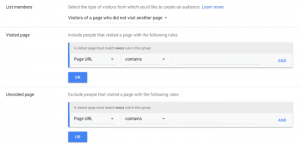Explore how integrating your martech platforms and tools can enhance your marketing strategy and drive meaningful business growth.
Does your organization’s martech stack resemble a disjointed patchwork of tools and platforms? This fragmentation will only create inefficiencies and hinder effective customer engagement. Let’s explore how integrating your martech platforms and tools can enhance your marketing strategy and drive meaningful business growth.
Connecting disjointed martech tools and platforms
Meet Emily, a marketing manager at a mid-sized ecommerce company. She started the year facing a daunting challenge: her organization’s martech stack was a patchwork quilt of solutions, each operating in its own silo. This disjointed system was inefficient and hindered her team’s ability to engage effectively with their digital-first customer base.
To manage this complexity, you need an integrated martech stack that boosts efficiency, drives revenue growth, encourages data-driven innovation and aligns with strategic goals. Integrating your martech tools isn’t just about technology — it’s crucial for long-term business success. However, obstacles like misalignment and poor collaboration can slow things down if not handled strategically.
To overcome these challenges, focus on:
- Addressing these barriers.
- Promoting an innovative culture.
- Building strong collaborations, especially between the marketing and IT teams.
The obstacle is the way
As Emily embarked on the journey to integrate her company’s martech stack, she encountered assorted obstacles — from resistance to change within her team to the technical complexities of integration. However, she knew overcoming these barriers was crucial for the company’s growth.
Without crushing these barriers, your martech stack risks being limited in capability. In contrast, we know from experience that integrated stacks streamline operations and significantly boost marketing ROI and customer lifetime value.
The long-term impact of a unified martech stack extends beyond immediate operational benefits. It reshapes the organization’s approach to customer engagement, leading to a deeper understanding of customer behaviors and preferences. This strategic shift enables more targeted, effective marketing strategies that drive sustained growth and customer loyalty.
Real-world strategic integration examples
Emily’s story reflects a common scenario in many organizations:
- One travel rewards company revitalized engagement by connecting online/offline data into personalized customer experiences via integrated CMS, CRM and analytics tools, resulting in a marked increase in customer retention and sales.
- A global software firm migrated to an integrated cloud-based CRM platform to improve marketing performance, experiencing a notable uplift in lead generation and conversion rates. Regional teams executed localized strategies while global leaders rolled up unified insights.
In both cases, strategic integration focused on:
- Consolidating customer data.
- Enabling personalized content.
- Providing visibility through analytics.
- Supporting efficient workflows across markets.
These examples underscore the strategic value of martech integration in driving long-term business goals, such as market expansion, customer loyalty and revenue growth.
A strategic framework for martech integration
A cohesive martech stack is essential for streamlining workflows, measuring campaign analytics, optimizing spend and automating repetitive tasks. Integration creates a seamless flow of data and insights across tools, empowering marketing teams to make decisions that positively impact the bottom line.
Here’s a strategic framework you can use as a foundation for developing your integration roadmap.
Evaluate and map your current martech stack
- Start by thoroughly evaluating existing tools/platforms and how they connect to core business goals around conversion, analytics, etc.
- Identify integration needs and gaps.
- Map customer data/insight flows across the stack to determine linkages. This creates visibility into pain points.
Set strategic vision and secure buy-in
- Define the end-state vision and objectives for an integrated stack based on your organizational needs.
- Get stakeholder and team alignment over direction.
- Secure executive commitment on priorities and make a business case for needed budget and resources.
Determine platforms and capabilities
- Decide on optimal platforms balancing innovation with ease of integration.
- Prioritize must-have unified capabilities like customer profiles, campaign analytics, workflow and more.
- Develop data integration models and requirements.
Build cross-functional teams
- Assemble a cross-disciplinary team combining marketing, IT, analytics and operational specialists.
- Assign clear ownership of stack components and shared KPIs to foster joint accountability.
- Emphasize the strategic importance of collaboration between these teams to ensure a holistic and effective integration of martech tools.
Phase the integration roadmap
- Create a phased implementation plan balancing complexity vs. quick wins.
- Allocate budget and resources to each phase.
- Determine required staff training and change management.
Continually measure and refine
- Define success metrics and milestones for the stack and each component.
- Continually monitor functionality, identify issues and optimize configuration.
- Regularly reevaluate platform choices and integration approaches amidst evolving needs.
If this strategic framework sounds familiar or even basic, it is. But if it’s so familiar or basic, why haven’t you done it yet?
Unlock your marketing strategy’s full potential
Integrating your martech stack strategically is more than just technical execution. It’s a forward-looking marketing strategy that uses technology for overall business growth. This approach ensures your marketing is effective now and adaptable for the future.
As you launch this initiative, see integration as a continual journey of adaptation. A well-integrated martech stack unlocks deeper customer understanding, fosters innovation and ensures a competitive edge. Begin with a strategic vision, and with each integration step, lay the groundwork for efficient operations and impactful marketing strategies.
It’s early 2024. You can do this. Embrace this transformative process to unlock your marketing strategy’s full potential in driving tangible business growth. Each step in your integration plan brings your marketing technology and strategy closer together, driving organizational growth and success.
The post How strategic martech integration drives business growth appeared first on MarTech.
MarTech(7)






